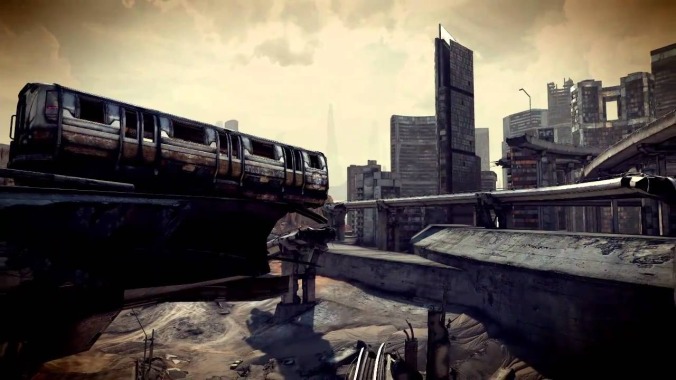Rage 2 is on the way, but the original is worth revisiting

Every Friday, A.V. Club staffers kick off our weekly open thread for the discussion of gaming plans and recent gaming glories, but of course, the real action is down in the comments, where we invite you to answer our eternal question: What Are You Playing This Weekend?
Rage
Rage 2 is one of the more surprising big-budget sequels on the horizon. The original, released in 2011 by Bethesda and the venerable first-person-shooter makers at id Software, wasn’t exactly well liked, and after seven years of it mostly being remembered as the game Jesse played on Breaking Bad when the show needed to cheaply depict his mental anguish, you’d be forgiven for thinking Bethesda had forgotten it as well. But we live in an age where no previously established media property can ever be well and truly dead, and so id is partnering with the developers of Just Cause and 2015’s Mad Max to revive Rage and build it into the game the studio seemingly wanted it to be all those years ago.
And that’s really the thing I’ve learned about the original Rage since going back and playing it in the wake of the sequel’s announcement. It’s a game that was just barely behind its time, a Frankensetin’s monster of a rock-solid first-person shooter, an anemic open world, and perfunctory driving. Borderlands came out two years before it and basically ate its lunch—even the layout of the world in those two games is remarkably similar, with grungy post-apocalyptic settlements stitched together by stretches of barren, ugly, mostly pointless land—but the thing I appreciate now about id’s version of this first-person open-world concept is ultimately the simplicity of it.
Borderlands is a prime example of how the slightest veneer of RPG bits—like skill trees and a never-ending quest for better and better stuff—started creeping into new genres until they became a prerequisite for nearly every major-publisher game released these days. Rage doesn’t have any of that. You go to town. You pick up some missions. You shoot some bandits. You return to town, get paid, and start again. At most, you get an upgrade here and there for your guns or your dune buggy or you find recipes that let you craft a few items, like healing bandages or door cutters (crafting is actually something Rage was ahead of the curve on; that doesn’t make it fun, though). Crucially, the game instead focuses more of its energy on the feel of the shooting: on making shotgun blasts feel meaty and destructive, on letting you stick and move and fling killer boomerangs between rounds.
I’m not saying there’s anything inherently bad about loading a game with RPG elements. (Although, I would say they’ve become a driving factor in the unfortunate homogenization and bloating of big-budget games.) But after all these years of fiddling with experience points and loot, the purity of something like Rage is a treat. And with a revitalized id Software handling the shooting side of things—with an emphasis on giving players all sorts of tools to mix into stylish, satisfying attack chains—and Avalanche Studios bringing its expertise in open-world hijinks, Rage 2 could very well be the game the original aspired to. I’m certainly looking forward to finding out.